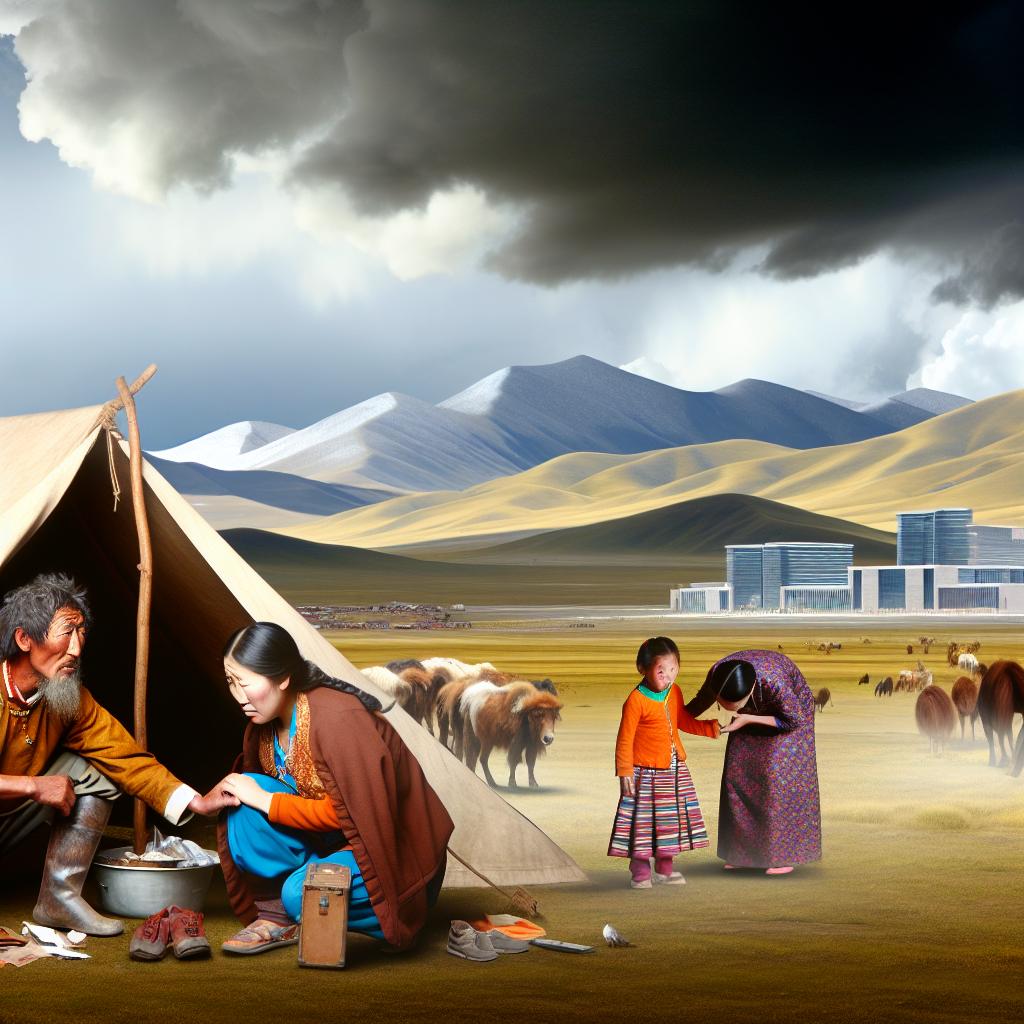The Context of Resettlement
The forced resettlement of Tibetan nomads forms part of the broader initiatives undertaken by the Chinese government in regions like the Tibetan Plateau. Over the years, these policies have been justified as efforts to modernize and improve the living conditions of these communities. According to Chinese authorities, resettlement is presented as a way to provide better access to education, healthcare, and infrastructure. However, the actual impact of these policies on the nomadic lifestyle and Tibetan culture remains a point of contention.
The policies for resettlement not only reflect a transformative agenda but also a complex interplay between socio-economic development and cultural preservation. The outcome of such initiatives is multifaceted, with implications extending from individual lives to communal identities.
Traditional Nomadic Lifestyle
Tibetan nomads, commonly known as “drokpa” in Tibetan, have traditionally led a pastoral lifestyle characterized by herding yak and sheep across the vast grasslands of the Tibetan Plateau. This way of life is not only an economic necessity but also deeply intertwined with cultural and spiritual practices. Nomadic movements are dictated by the seasons, allowing these communities to manage the ecosystem of the plateau sustainably.
The ecosystem of the Tibetan Plateau, often referred to as the “Roof of the World,” is fragile. The drokpa’s traditional lifestyle contributes significantly to its preservation. Their seasonal migrations prevent overgrazing, ensuring that the land remains viable for future generations. This pastoral lifestyle has been honed over centuries, providing a symbiotic relationship between the nomads and their environment.
Despite the challenges of a migratory lifestyle, such as harsh weather conditions and limited access to modern amenities, the Tibetan nomads have forged a resilient culture. Each migration is accompanied by established rituals and community practices, reinforcing social bonds and ensuring the transmission of cultural knowledge across generations.
Government Policies and Implementation
Since the early 2000s, several government initiatives have been introduced that promote the resettlement of Tibetan nomads into permanent housing. Notably, the “comfortable housing” policy and “ecological resettlement” programs are among these initiatives. The primary objective cited is to alleviate poverty and mitigate environmental decay purportedly caused by overgrazing.
These policies involve constructing new villages with modern amenities. Often, these villages are on the outskirts of urban areas, where infrastructure such as roads, schools, and hospitals are more readily accessible. The new villages symbolize a shift towards a more sedentary lifestyle, offering prospects of integrating into broader economic systems and enhancing living standards.
Nevertheless, there remains a debate regarding whether the benefits of such amenities outweigh the loss of traditional lifestyles and cultural autonomy. The essence of the drokpa’s existence is intricate, woven with cultural threads that are not easily translated into modern urban living.
The government also justifies these policies under the guise of environmental sustainability. The narrative suggests that reducing overgrazing will enable ecological recuperation. However, there is a counter-dialogue about whether urban resettlement of nomads indeed aids ecological progress or overlooks the nomads’ intrinsic role in environmental stewardship.
Impact on Culture and Identity
The movement from a nomadic to a sedentary lifestyle has significant cultural implications. For many Tibetans, resettlement holds the potential for a loss of cultural identity. Elements such as religion, local languages, and communal living practices are closely intertwined with their traditional way of life. Critics argue that the forced shifts may undermine these cultural practices, posing a threat to the preservation of Tibetan heritage.
As nomads transition to life in newly constructed settlements, there is a palpable risk of cultural dilution. Practices that were once common in the pasturelands may not translate well into urban settings. The disintegration of nomadic traditions can lead to diminished cultural practices and a weakened connection to ancestral heritage.
Furthermore, communal life — a cornerstone of Tibetan nomads’ identity — may be compromised in resettlement. In their traditional settings, community living encourages participation in collective decision-making and shared responsibilities. Moving to a more individualistic urban setting challenges these social fabrics, leading to potential isolation.
International Reactions and Concerns
Several international human rights organizations have expressed concerns regarding the forced nature of these resettlements. They argue that the policies may infringe on the rights of Tibetan nomads to maintain their traditional practices and question the extent of the nomads’ consent to such moves. Advocacy groups urge for more transparent dialogues between the authorities and the affected communities to ensure that the nomads’ voices are considered in development plans.
The international community has called for a reevaluation of these policies. They emphasize that development should not come at the cost of cultural erosion and stress the importance of voluntary participation in resettlement programs.
Moreover, there is a growing appeal for preserving worldwide cultural diversity. Ensuring that Tibetan nomads can continue their lifestyle honors their heritage and enriches global cultural landscapes.
Ultimately, these issues draw attention to the broader conversation about cultural autonomy and development. As the march towards modernization continues, there arises a crucial need to balance progress with respect for cultural heritage and identity preservation.

